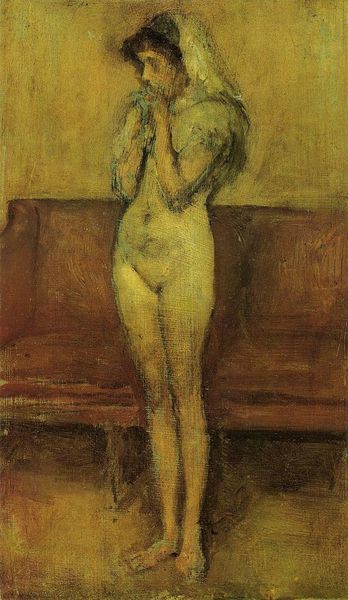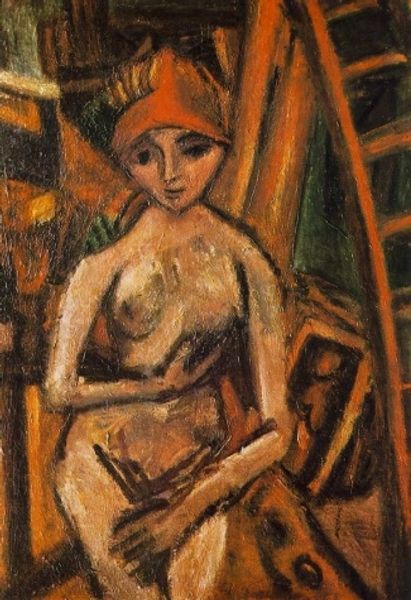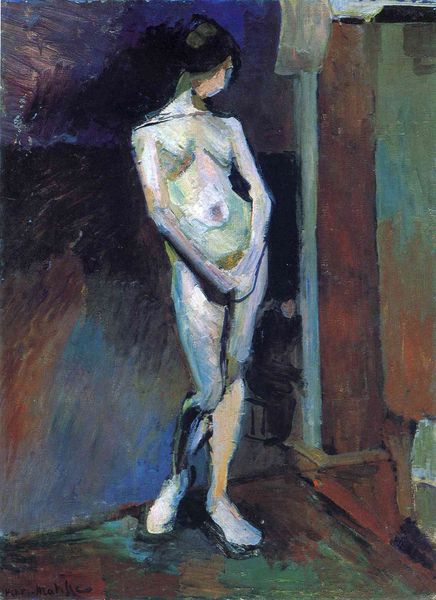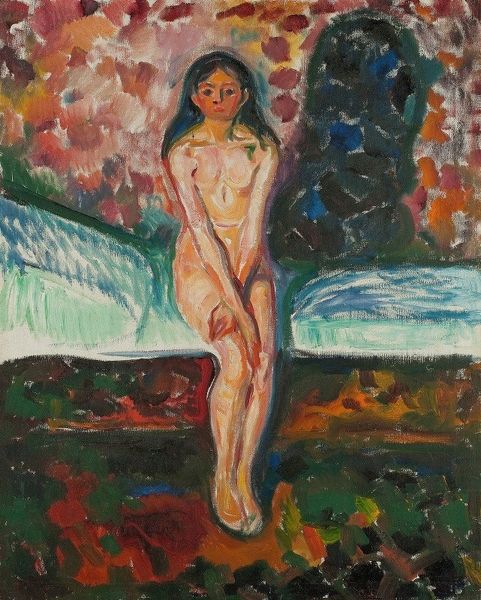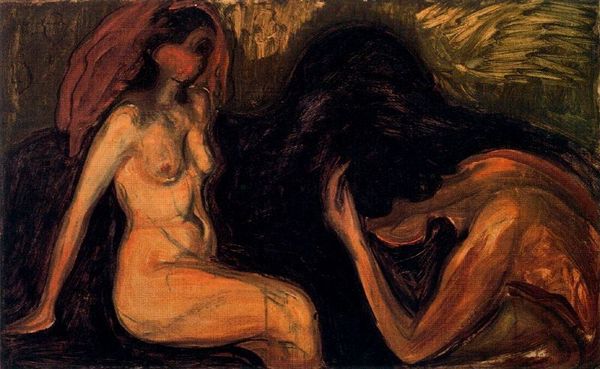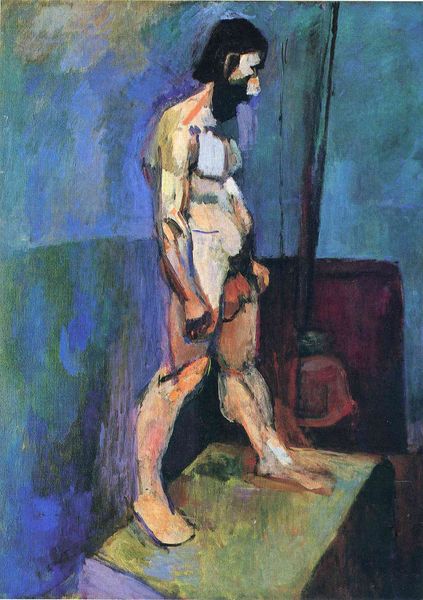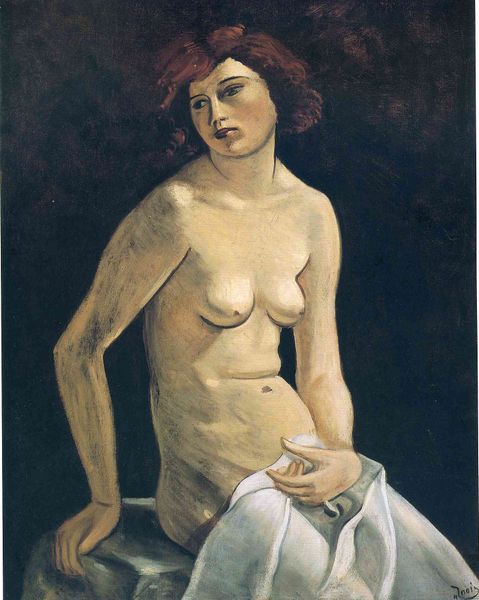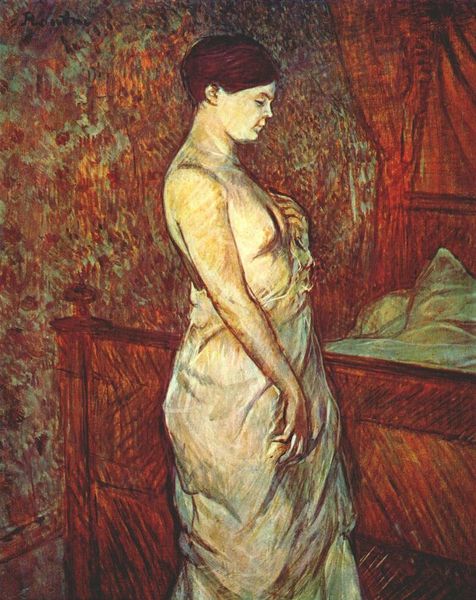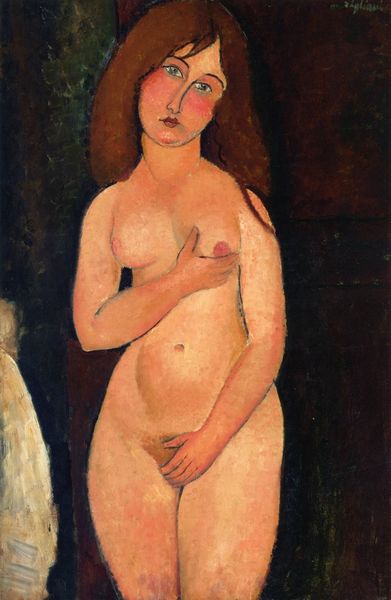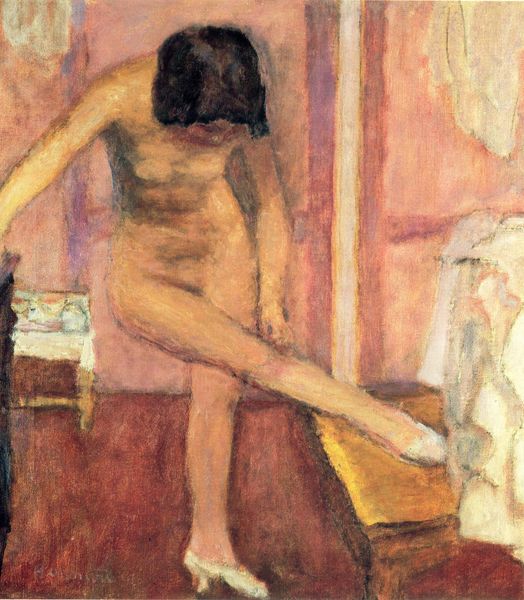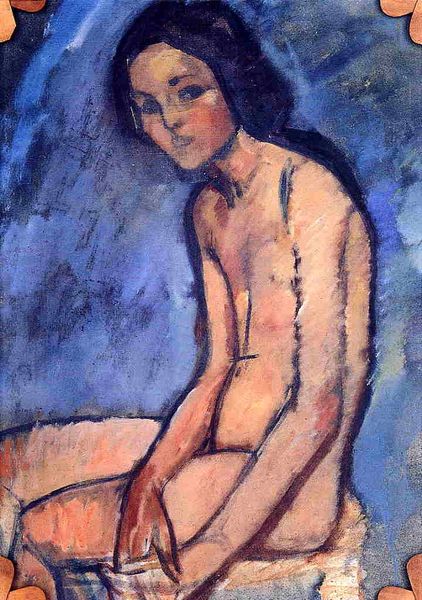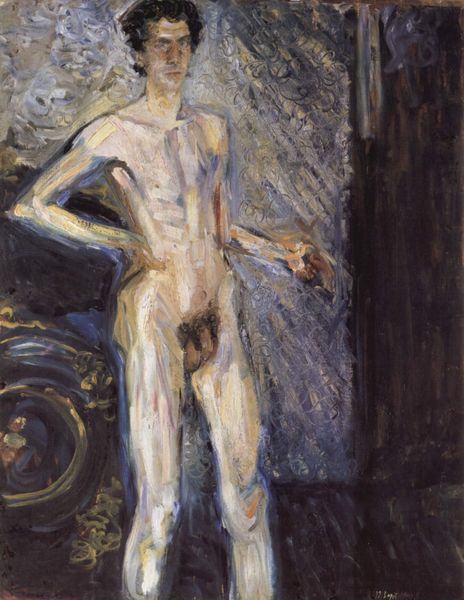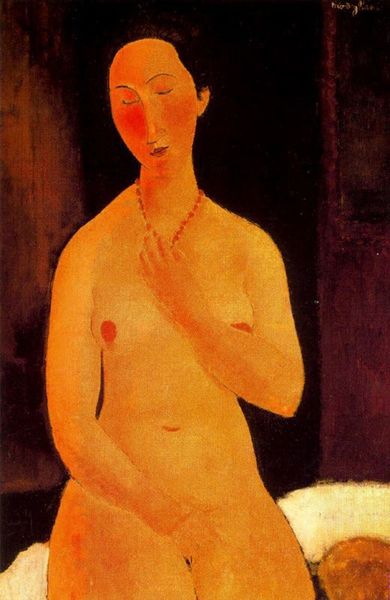
painting, oil-paint
#
portrait
#
painting
#
oil-paint
#
figuration
#
oil painting
#
female-nude
#
expressionism
#
symbolism
#
portrait drawing
#
nude
#
portrait art
#
modernism
Dimensions: 151.5 x 110 cm
Copyright: Public domain
Curator: The work before us is Edvard Munch’s “Puberty,” painted in 1894. Editor: Wow. There's a rawness that's almost unsettling, right? Like catching someone in a deeply private, awkward moment. The heavy shadows seem to weigh down the figure, like a… looming premonition. Curator: Munch's work often explores complex themes like anxiety, sexuality, and death. This particular painting became an important contribution to both symbolism and early expressionism, capturing the psychological intensity that defined those movements. It also challenged social conventions about portraying the female nude at that time. Editor: Absolutely, it's got that modern spirit: laying bare something unspoken and slightly disturbing. What strikes me, compositionally, is the directness of the girl’s gaze and her clasped hands. They both seem to signal this sense of vulnerability and also a strange self-possession, or knowing. Curator: Indeed. Munch uses a muted palette—primarily earth tones—which contributes to the sense of unease. The stark contrast between light and shadow emphasizes the girl's figure against the vaguely defined background, heightening her isolation. We can see here the artistic conventions related to social morality were clearly on his mind. Editor: The dark shadow is like a… I don’t know, like a bad feeling made visible! Or maybe the burden of a secret? Either way, it does a lot to dial up the disquiet. And those brushstrokes? So loose, so urgent! It's less about exactness, more about that instant flush of sensation. I almost feel embarrassed just looking at it, which I guess is precisely the point. Curator: The painting caused considerable controversy at the time. Public responses ranged from complete dismissal to utter outrage. In Norway, as elsewhere, prevailing views about youth, and especially the female body, were rigidly enforced by civic and religious groups. What some saw as indecent, however, others recognized as an important cultural shift in what art was expected to represent. Editor: This feels so of-the-moment, even now, don't you think? This makes you ponder the uncomfortable rites and rituals of coming-of-age. Definitely, a piece to get your inner gears churning, right? Curator: Exactly, it shows how closely linked cultural values are to our art and artistic preferences. Thank you, yes a truly thought-provoking work by Munch.
Comments
No comments
Be the first to comment and join the conversation on the ultimate creative platform.
